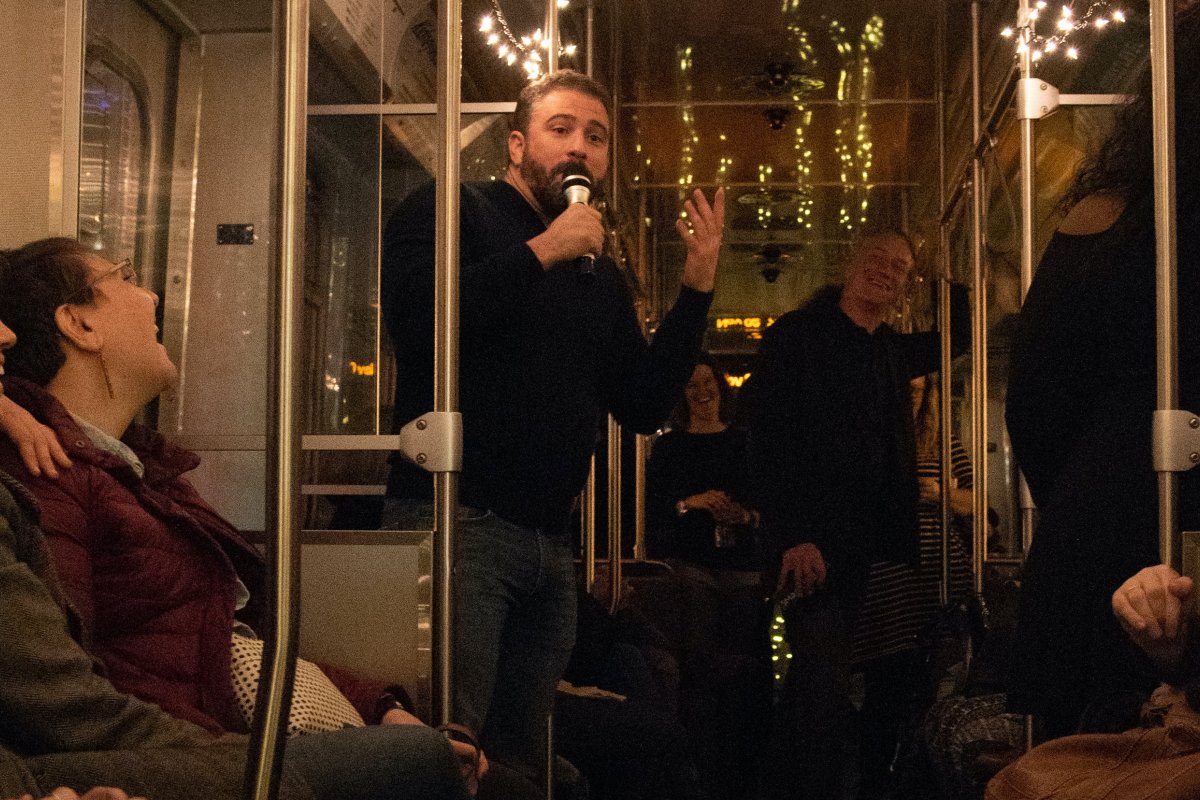
How to Throw a Party in a Pandemic
Pastoral reflections on sharing good news in difficult times
“How much does a proper circus tent cost?”
“What’s the lowest temperature at which a mariachi band can perform?”
“Could we get everyone in hazmat suits?”
This is Easter planning at Gilead Church Chicago, a four-year-old, queer, storytelling bar church on the far north side. After doing an entirely virtual Easter last year, we are determined to get back to something analog in 2021. Something incarnate. Bodily. Something more like 2019, our inaugural Easter Dance Party.
That warm April night, there were ninety or so of us stuffed into Mary’s Attic, the drag-themed bar above Hamburger Mary’s in Andersonville (RIP). We ate tacos, heard true stories of coming back to life, and hunted for adult Easter eggs containing safe sex supplies from Howard Brown. And, of course, we danced. DJ Rae Chardonnay, named the city’s best by the Chicago Reader the year before, got folks over their wallflower reluctance early. Soon, the congregation was one body moving in time together. Then finally, our rompers soaked with sweat, we pressed in around the communion table for the Eucharist, the way every good dance party should end.
No, we are not planning a crowded dance party in 2021. Hazmat suits proved to be too expensive. But we are planning a party with food, and drinks, and music. We are planning a party with stories, and poems, and communion. Or maybe I should say, we are planning to plan a party, whenever we can figure out how.
This is not our first logistically-complicated rodeo. In the fall of 2018, we pulled off an All Souls’ Day bash on a moving CTA train. We found ourselves needing to answer questions like, “How do you keep a table full of soul food from sliding around the car?” (Duct tape.) “How long will the bathroom break need to be when we get to Kimball?” (Too long.) And, “Will it still feel like a party if people are sharing stories of their beloved dead?” (Yes. Maybe even more so.)
Both parties were part of a grant we had for ministry with and from young adults. At that time, we focused our project on the epidemic of loneliness hitting Millennials and Gen Z, and on the problems of making friends as an adult. We told stories of friendship and loneliness in worship. We held “Friend School” retreats. We threw epic parties, a year’s-worth of them. That year taught us a lot about how to throw parties and why.
Toward the end of my time at Swift Hall, the director of the MDiv program, Rev. Dr. Cynthia Lindner, sat our cohort down and told us something to the effect of: You all are good at expressing the bad news, at getting across the pain, injustice, and evil of the world, but I’m not sure you deliver good news with as much clarity and conviction. What we learned in throwing a year of parties was that the same thing that was missing from my cohort’s preaching was missing from our congregants’ experience of religion: real joy, real celebration, good news that actually felt like good news.
Lots of churches had forgotten how to throw a party. Not a church party, which is just a cantata and a sheet cake, but a real party, the kind of party you would go to even if it weren’t a holy day of obligation. The kind of party that can stand up with clarity and conviction to the bad news that we’re given on a daily basis. The kind of party that can stand up—if only for a night—to the pain, injustice, and evil that dominate our days. The kind of party that might even put a dent in the powers of death, in the form of, e.g., a global pandemic.
We’ve been trying. It’s not easy to throw a party when you can’t eat together or drink together – let alone be pressed in, shaking together, overflowing with joy. We’ve been settling for moments of delight rather than ecstasy, aiming just above sheet cake. A picture-in-picture video of a hedgehog that played over the entirety of a sermon about vulnerability. An outdoor, in-person service for which we hired a saxophonist. (Worshipping with that riff from “Baker Street” is worth at least two cantatas.) A beer release party in late November which featured a fire pit, an accordion, and gale force winds (and which Religion News Service reported as having a “tiny apocalyptic carnival” vibe). We haven’t attempted anything on the order of a train party, but we have tried to provide a little real joy, parceled out week by week, like a trail of breadcrumbs strewn through the year. Not the celebration that we need or want, but hopefully enough to see us through.
We’ve settled on that trail of crumbs as a shape for Easter this year. We’re taking as many of the elements of a dance party as we can manage and stringing them out along a mile walk in Rogers Park. A story of new life delivered from the balcony of one apartment. An Easter Jell-O shot slipped surreptitiously to you at another. Maybe puppets. Definitely music. Hopefully a t-shirt cannon if we can find one for less than $35K.
That’s the plan. Here a surprise, there a sense of wonder. Down the street something that makes you laugh till you cry. An experience that meets you in your grief, and moves you to a place of joy. Something so good you have to run home and tell about it. In other words: Easter, or as close as we can get to it. Good news with clarity, conviction, and a t-shirt coming at you at 60 miles an hour.
Photo: Gilead Member Scott Whitehair speaks during the church's All Souls' day event on the CTA in November 2018. (Jordan Doyel)


